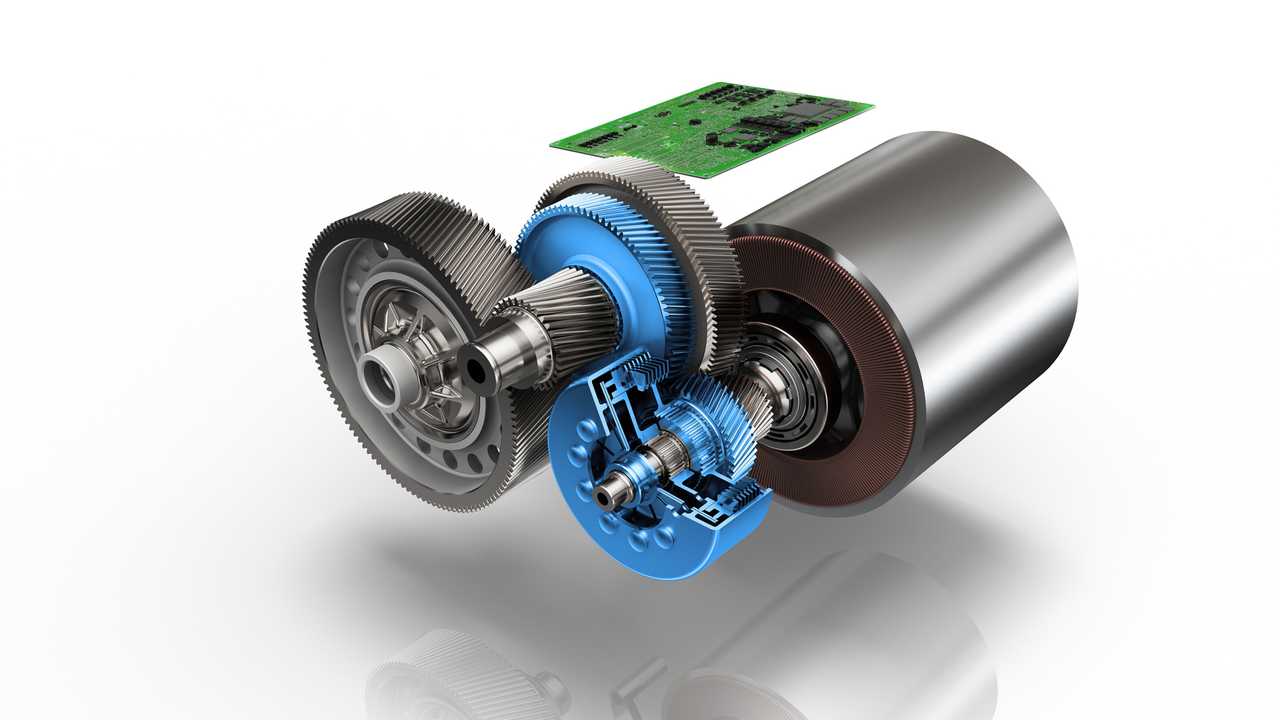ZF tries to convince OEMs to use a 2-speed transmission and decrease the energy consumption of passenger EVs by some 5%.
ZF presents its new 140 kW 2-speed drive unit for electric cars (scalable up to 250 kW), which consists of an electric motor, 2-speed transmission and power electronics – all integrated into a compact drive unit.
The idea of having two speeds is to make the drive more efficient as well as to offer high torque with a high top speed (which otherwise is achieved by oversizing the motor with a single-speed transmission). As modern electric cars have plenty of power (often above 100 kW) there is not much need for the second, or third gear (although some hypercars like Rimac use 2-speeds for crazy top speeds).

ZF says that its 2-speed drive unit offers 5% better range, compared to a single-speed drive unit, which is a solid gain, but doesn’t seem enough to justify the increased complexity. The shift between the gears happens at around 70 km/h (43.5 mph).

Bert Hellwig, Head of System House at ZF’s E-Mobility division said:
“For electric vehicles in everyday use, it is important to obtain as much range as possible from each battery charge. Every percent of improvement in energy conversion efficiency translates into two percent more range.” To increase the performance rating of the new electric axle drive system, ZF leveraged its expertise in systems to develop a new electric motor with a maximum power rating of 140 kW paired with a two-stage shift element. “Bringing together our know-how in relation to electric motors, gearboxes, and power electronics ensures that we achieve the best possible range from each battery charge”.
An interesting idea though is shifting the gears depends on GPS position, but it’s hard to say what the real-world outcome would be.
“By connecting to the vehicle’s CAN communication it is also possible – if the customer so wishes – to devise other shift strategies, possibly linked to digital map material and GPS. For example, the vehicle could identify from the GPS route programming how far it is to the next charging station, enabling it to respond predictively by switching into Eco-mode. More effective shifts would also be possible in accounting for topography on the interstate, and on inter-city journeys. The software in the drive can also be updated thanks to the network link to Cloud services via over-the-air updates.
For vehicle manufacturers, the new 2-speed drive offers two options for using improved energy conversion efficiency. The Original Equipment Manufacturer (OEM) could either go for an extended range while retaining the same size of accumulator, or utilize a smaller accumulator.
Modular approach: bests result for efficiency or performance
Thanks to the design of this unit that optimizes installation space, the 2-speed system is suitable for compact passenger cars where interior space is at a premium.
The 2-speed concept offers benefits for OEMs who are pursuing performance. “Until now, with electric motors, vehicle manufacturers have had to choose between high initial torque and a high top speed”, explains Hellwig. “We are now resolving this conflict and the new drive will be compatible for performance and heavier vehicles – for example for passenger cars towing a trailer.” ZF’s modular approach combines the 2-speed gearbox with even more powerful electric motors rated for up to 250 kW. This delivers enhanced acceleration and, potentially, faster top speeds. With its modular concept, the new drive can meet a variety of requirements.”

